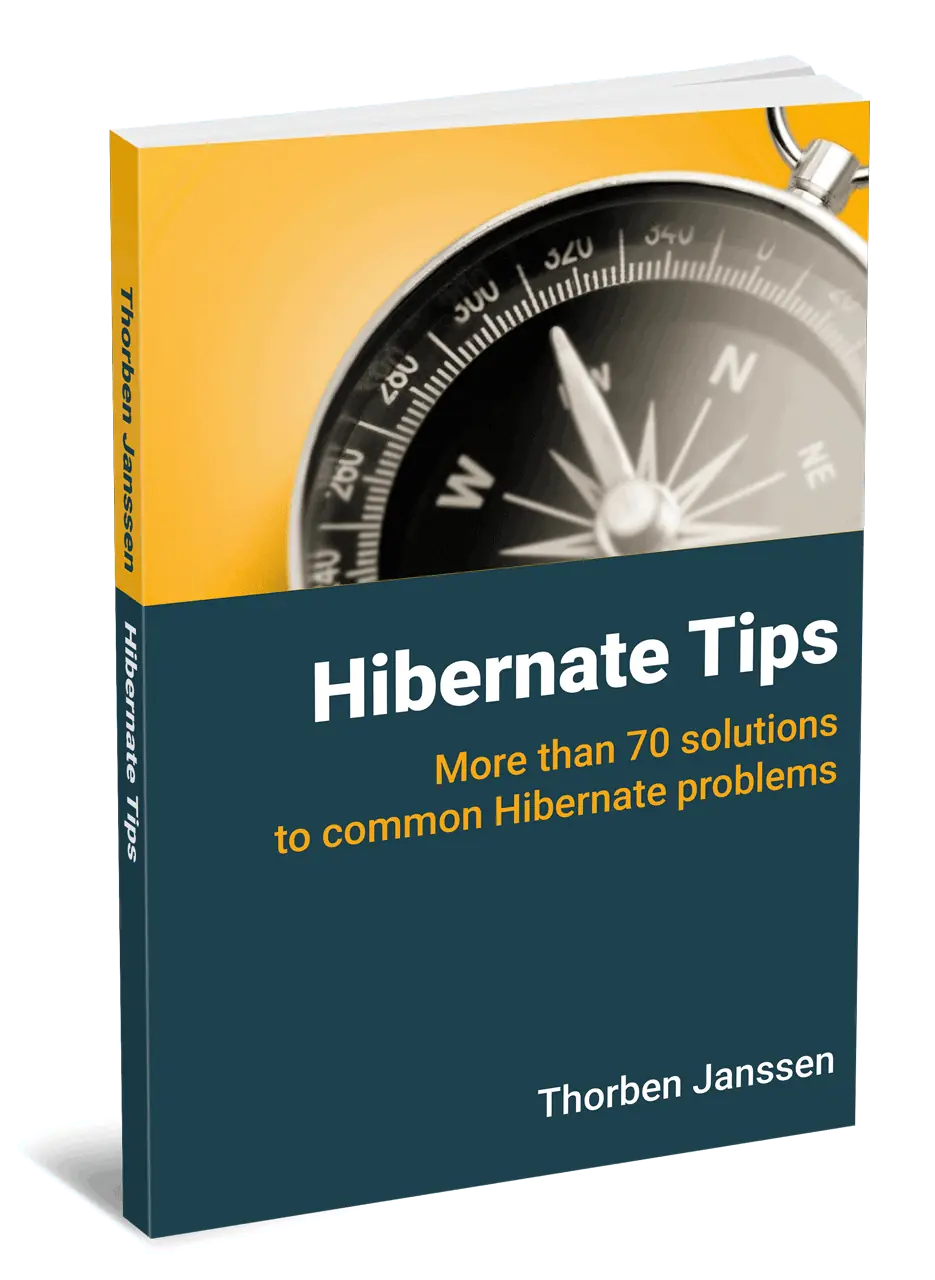Hibernate Tips: How to persist a List of Strings as an ElementCollection
Take your skills to the next level!
The Persistence Hub is the place to be for every Java developer. It gives you access to all my premium video courses, monthly Java Persistence News, monthly coding problems, and regular expert sessions.
Hibernate Tips is a series of posts in which I describe a quick and easy solution for common Hibernate questions. If you have a question for a future Hibernate Tip, please leave a comment below.
Question:
I need to persist a simple List of Strings. Do I really need to create an extra entity for it?
Solution:
Since JPA 2.0, you can use an element collection to persist a Collection of value types. You just need to annotate the attribute with @ElementCollection and the persistence provider will persist the elements of the Collection in an additional database table.
@Entity
public class Author {
@ElementCollection
private List<String> phoneNumbers = new ArrayList<String>();
...
}
The element collection might seem easier to use than an entity with a one-to-many association. But it has one major drawback: The elements of the collection have no id and Hibernate can’t address them individually.
When you add a new Object to the List or remove an existing one, Hibernate deletes all elements and inserts a new record for each item in the List.
Let’s take a quick look at an example. The following code snippet selects an Author entity and adds a second phoneNumber to the element collection.
EntityManager em = emf.createEntityManager();
em.getTransaction().begin();
Author a = em.find(Author.class, 1L);
a.getPhoneNumbers().add("42424242");
em.getTransaction().commit();
em.close();
When you execute this code, Hibernate performs 2 SELECT statements to read the Author entity and the associated phoneNumbers. Then I add the second phoneNumber to the element collection. And Hibernate updates the Author entity, drops all associated phoneNumbers and inserts a new record for each phoneNumber.
14:53:13,371 DEBUG [org.hibernate.SQL] -
select
author0_.id as id1_0_0_,
author0_.firstName as firstNam2_0_0_,
author0_.lastName as lastName3_0_0_,
author0_.version as version4_0_0_
from
Author author0_
where
author0_.id=?
14:53:13,427 DEBUG [org.hibernate.SQL] -
select
phonenumbe0_.Author_id as Author_i1_1_0_,
phonenumbe0_.phoneNumbers as phoneNum2_1_0_
from
Author_phoneNumbers phonenumbe0_
where
phonenumbe0_.Author_id=?
14:53:13,480 DEBUG [org.hibernate.SQL] -
update
Author
set
firstName=?,
lastName=?,
version=?
where
id=?
and version=?
14:53:13,491 DEBUG [org.hibernate.SQL] -
delete
from
Author_phoneNumbers
where
Author_id=?
14:53:13,494 DEBUG [org.hibernate.SQL] -
insert
into
Author_phoneNumbers
(Author_id, phoneNumbers)
values
(?, ?)
14:53:13,496 DEBUG [org.hibernate.SQL] -
insert
into
Author_phoneNumbers
(Author_id, phoneNumbers)
values
(?, ?)
As you can see, an element collection is an easy but not the most efficient option to store a list of value types in the database. You should, therefore, only use it for very small collections so that Hibernate doesn’t perform too many SQL statements. In all other cases, a one-to-many association is the better approach.
Learn more:
Before you use an element collection, you should take a look at the mapping of many-to-one associations. JPA and Hibernate make them very easy to use and Hibernate can handle them more efficiently.
Hibernate Tips Book

Get more recipes like this one in my new book Hibernate Tips: More than 70 solutions to common Hibernate problems.
It gives you more than 70 ready-to-use recipes for topics like basic and advanced mappings, logging, Java 8 support, caching, and statically and dynamically defined queries.


Thank you so much very important information good job I like this article.